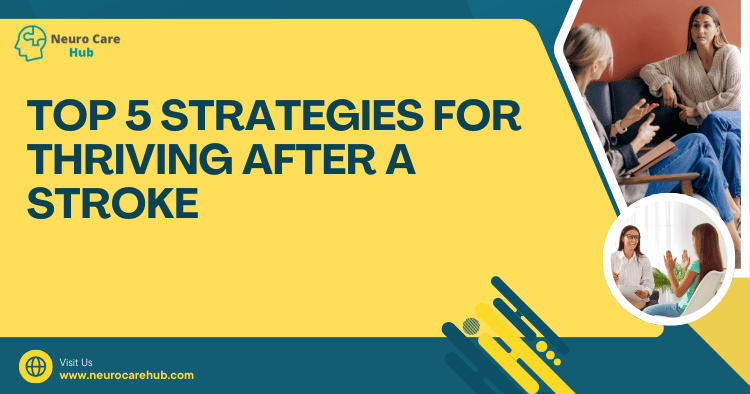Table of Contents
Strategy 1
Sub-Strategy 1.1
Sub-Strategy 1.2
Strategy 2
Strategy 3
Strategy 4
Strategy 5
Table of Contents
- Understanding Stroke and Its Impact
- Embracing Rehabilitation
- Creating a Support Network
- Focusing on Nutrition and Wellness
- Setting Realistic Goals and Staying Positive
Understanding Stroke and Its Impact
A stroke can be a life-altering event, affecting not only the individual but also their families and friends. It occurs when blood flow to the brain is interrupted, either by a blockage (ischemic stroke) or a burst blood vessel (hemorrhagic stroke). Understanding the type of stroke you or your loved one experienced is crucial for recovery.
Common Effects of Stroke:
– Physical disabilities, including weakness or paralysis
– Cognitive impairments, such as memory loss or difficulty concentrating
– Emotional challenges, including depression and anxiety
Recognizing these challenges can better prepare you to address them.
FAQs:
– What are the common signs of a stroke?
Look for sudden numbness, confusion, trouble speaking, vision problems, and loss of balance. Remember: Time is critical. Call emergency services immediately if you notice these signs.– How long does recovery from a stroke take?
Recovery varies greatly; some people may see improvements in weeks, while others may take months or years. It’s essential to remain patient and celebrate small victories.
For more information on stroke types and symptoms, visit the American Stroke Association.
Embracing Rehabilitation
Rehabilitation is at the heart of recovery and can significantly improve the quality of life post-stroke. A well-structured rehabilitation program typically includes:
– Physical Therapy: Focuses on regaining mobility and strength.
– Occupational Therapy: Aims to improve daily living skills, such as dressing or cooking.
– Speech Therapy: Helps with communication difficulties.
Benefits of Rehabilitation:
– Enhances physical abilities
– Improves cognitive function
– Boosts emotional well-being
Engaging in therapy as soon as possible is crucial. Research suggests that early intervention leads to better outcomes. In 2024, advancements in rehabilitation technologies, such as virtual reality and robotics, are expected to enhance recovery experiences significantly.
FAQs:
– How often should I attend therapy sessions?
Most rehabilitation programs recommend attending sessions 2-5 times a week, depending on individual needs.– Can I do exercises at home?
Yes! Your therapist can provide exercises tailored for home use, but it’s important to follow their guidelines.
To learn more about rehabilitation options, check out Rehabilitation Research & Practice.
Creating a Support Network
Recovering from a stroke can feel isolating, but building a supportive network can make a world of difference. Here’s how to create and maintain that network:
1. Involve Family and Friends: Encourage them to join you in physical activities or support groups.
2. Join a Support Group: Connecting with others who have experienced a stroke can provide emotional support and practical advice.
3. Engage with Healthcare Professionals: Regular communication with doctors, therapists, and nurses is vital for your recovery journey.
Benefits of a Support Network:
– Provides emotional reassurance
– Helps with motivation and accountability
– Offers practical assistance in daily tasks
FAQs:
– What should I look for in a support group?
Look for groups with a shared experience, guided by a trained facilitator, and those that foster open dialogue.– How can I get my family involved?
Keep them informed about your progress and invite them to participate in therapy sessions or exercises.
To find local support groups, consider visiting National Stroke Association.
Focusing on Nutrition and Wellness
Post-stroke, maintaining a balanced diet is essential for recovery and preventing future strokes. Here are some key nutritional strategies:
– Emphasize Whole Foods: Incorporate fruits, vegetables, whole grains, and lean proteins to nourish your body.
– Limit Sodium and Sugar: Reducing salt and sugar intake can help manage blood pressure and weight.
– Stay Hydrated: Drinking plenty of water is crucial for overall health.
Sample Meal Plan:
Meal Food Options Breakfast Oatmeal with berries and nuts Snack Carrot sticks with hummus Lunch Grilled chicken salad with mixed greens Snack Greek yogurt with honey Dinner Baked salmon with quinoa and broccoli
FAQs:
– Are there specific foods I should avoid?
Yes, limit processed foods, sugary snacks, and saturated fats.– Can nutrition affect my recovery?
Absolutely! A nutritious diet supports healing and can improve overall health.
For detailed nutritional guidelines, visit Choose My Plate.
Setting Realistic Goals and Staying Positive
Setting achievable goals can greatly enhance your recovery journey. Here’s how to approach goal-setting effectively:
1. Start Small: Focus on short-term goals, like walking for 10 minutes a day.
2. Track Your Progress: Keeping a journal can help you see how far you’ve come.
3. Celebrate Achievements: Acknowledge and reward yourself for milestones, no matter how small.
Benefits of Positive Thinking:
– Reduces stress and anxiety
– Improves motivation and resilience
– Enhances overall well-being
FAQs:
– How can I maintain a positive mindset?
Practice gratitude, surround yourself with supportive people, and engage in activities that bring you joy.– What if I feel discouraged?
It’s normal to feel down occasionally. Consider speaking with a therapist or counselor who specializes in post-stroke recovery.
For strategies on maintaining a positive outlook, check out Mental Health America.
Conclusion
Adapting to life after a stroke is undoubtedly challenging, but by embracing rehabilitation, building a support network, focusing on nutrition, and setting realistic goals, you can not only survive but thrive. Remember, recovery is a journey, and every step forward is a victory. Celebrate your resilience, stay connected with loved ones, and prioritize your well-being. You’ve got this!
For further insights on stroke recovery and related topics, explore articles like Top 5 Emergency Neuro Care Tips When Every Second Counts






